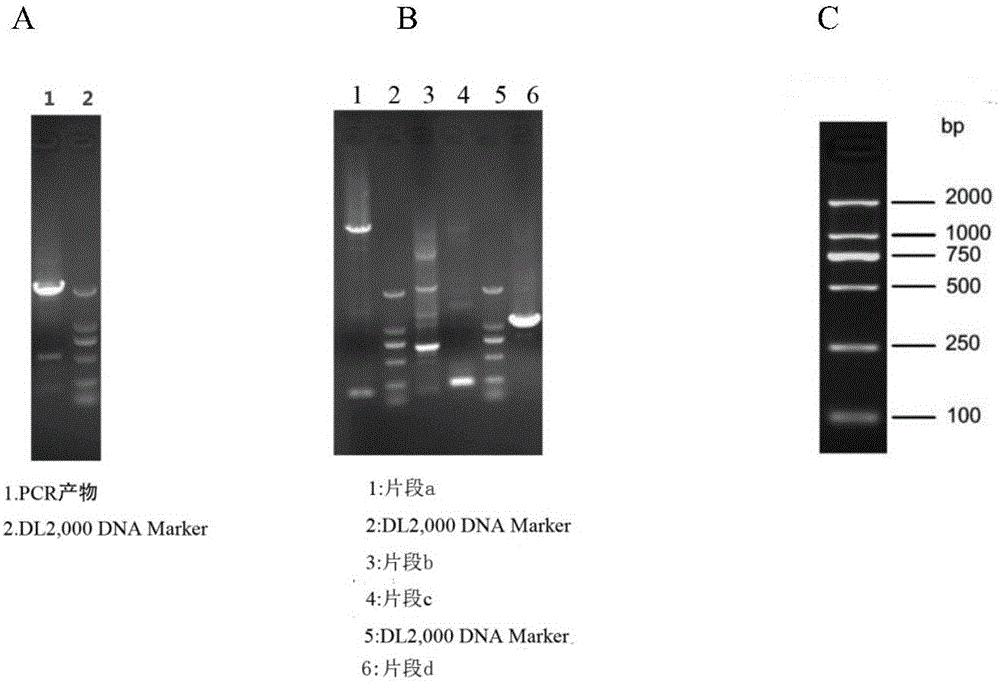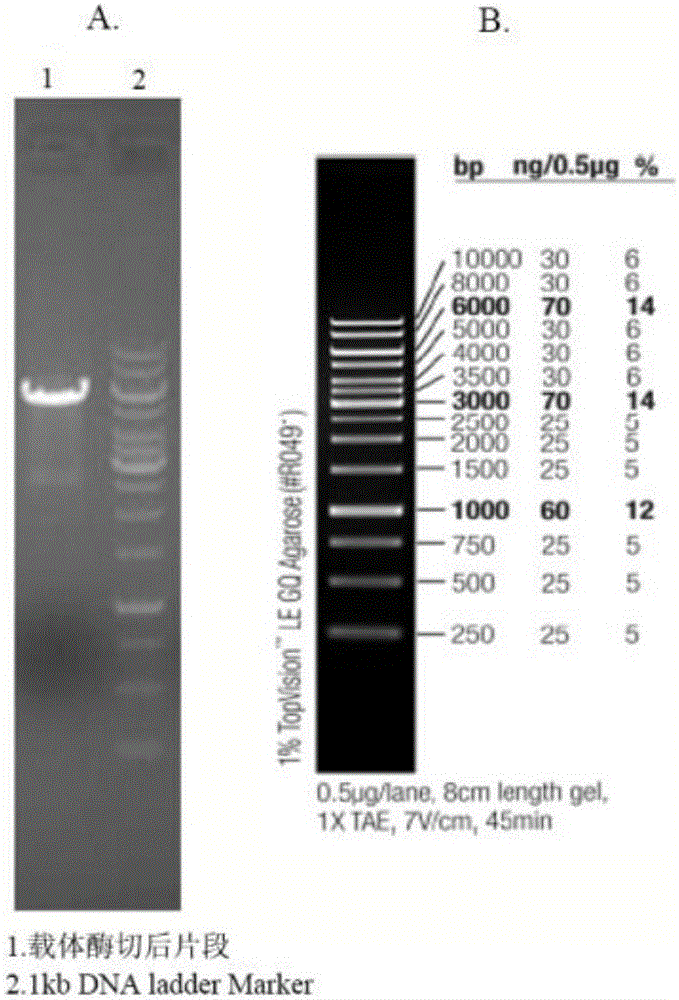Application of transcription factor Fo x O3 in preparing cerebral ischemia reperfusion nerve injury drug
A technology of cerebral ischemia reperfusion and transcription factors, applied in the field of medicine, can solve problems such as toxic side effects, bleeding complications, and weak curative effect
- Summary
- Abstract
- Description
- Claims
- Application Information
AI Technical Summary
Problems solved by technology
Method used
Image
Examples
Embodiment 1
[0059] Example 1: Construction of adenoviral vector for overexpression of transcription factor FoxO3
[0060] 1. Cloning of FoxO3 target gene
[0061] The cDNA of human FoxO3 (gene sequence number NM_001455) was used as a template, and P1 was used as a primer (Table 1) to carry out PCR amplification of the target fragment, and the PCR amplification product was identified by 1% agarose gel electrophoresis, and a specific amplification product of about 2098bp was obtained. Increase the stripe size to match the size of the destination stripe ( figure 1 A); using the WT-FoxO3 gene as a template, respectively using P2, P3, P4, and P5 as primers (Table 1) to carry out PCR amplification of the target fragment to obtain specific amplification bands: 169bp fragment a, 666bp fragment b, fragment c of 225bp and fragment d of 1098bp, consistent with the size of the target band ( figure 1 B).
[0062] Table 1 Gene cloning primers
[0063]
[0064]
[0065] Specific amplified band...
Embodiment 2
[0096] Example 2: Effect of overexpression of FoxO3 on the expression of autophagy-related proteins in OGD / R injured HT22 cells
[0097] 1. Determination of the multiplicity of infection (MOI) value
[0098] The HT22 cells were infected with MOI values of 50, 200, 500, and 1000. The results showed that when the MOI was 50, 200, 500, and 1,000, the infection efficiency was 50%, 75%, 85%, and 95%. The infection efficiency was the highest at 500 and 1000, but when the MOI was 1000, the cell damage was greater. On the basis of high infection efficiency, low MOI value, and low cytotoxicity, this experiment selected MOI values between 200-500 for follow-up experiments ( Figure 9 ).
[0099] 2. Establishment of OGD / R model of HT22 cells
[0100] (1) Effect of OGD injury at different time on the activity of HT22 cells
[0101] MTT colorimetric assay was used to detect the effects of different periods of oxygen-glucose deprivation on the viability of HT22 cells. Taking the ce...
Embodiment 3
[0118] Example 3: Effect of overexpression of FoxO3 on the expression of autophagy-related proteins in rat MCAO / R injured brain tissue
[0119] 1. Establishment of MCAO / R model in rats
[0120] (1) Behavioral observation
[0121] Before cerebral ischemia, the vital signs of the rats were normal and they were awake. Loss of consciousness and mobility within 1 minute after ischemia, righting reflex disappears, limbs become stiff, pain disappears, bilateral pupils dilate, eyelid closure reflex disappears when stimulated by strong light at the same time, eye color is off-white (normally bright red) ). Immediately after reperfusion, the eyeball color returned to red and the pupil retracted. And after the rats woke up, Horner syndrome appeared on the right side, that is, the right eye fissure was small and the pupil was constricted; Turn right and fall down.
[0122] (2) TTC staining observation
[0123] The normal brain tissue was stained red, while the infarct after ischemia...
PUM
 Login to View More
Login to View More Abstract
Description
Claims
Application Information
 Login to View More
Login to View More - R&D
- Intellectual Property
- Life Sciences
- Materials
- Tech Scout
- Unparalleled Data Quality
- Higher Quality Content
- 60% Fewer Hallucinations
Browse by: Latest US Patents, China's latest patents, Technical Efficacy Thesaurus, Application Domain, Technology Topic, Popular Technical Reports.
© 2025 PatSnap. All rights reserved.Legal|Privacy policy|Modern Slavery Act Transparency Statement|Sitemap|About US| Contact US: help@patsnap.com



